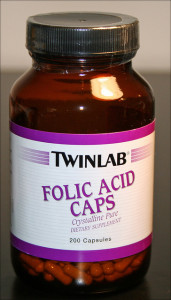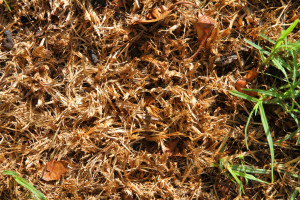It’s very difficult, if not impossible, for one single person to thoroughly review every single piece of peer reviewed literature related to wine that is published every day. This Wine Literature Review Lightning Round series presents three new papers (within the past year or two) in one post by briefly summarizing the research and linking to the abstract in order for you to pursue further if you’re interested. If there is enough reader interest, I can review any of the papers introduced to you in this post in a more critical assessment.
HEALTH
“Bioengineering yeast to enhance folate levels in wine”, published in February 2015 in the journal Process Biochemistry aimed to improve upon the overall health benefits of wine by fortifying the beverage with folate, an essential B9 vitamin for humans of all ages. Particularly critical in early embryonic development and shown to reduce risk of spinal cord deformities, folate/B9 deficiencies in adults can lead to anemia as well as cardiovascular disease.
Brief Methods: In this study, researchers found that folate levels in wine were primarily determined by the
yeast used during fermentation. Thus, they bioengineered the specific yeast strain Saccharomyces cerevisiae M2 to produce greater levels of folate by overexpressing two different genes that are known to be responsible for folate production in yeasts. Chardonnay and Pinot Noir wines were made from the two bioengineered yeasts (each one with a different gene manipulated) as well as a control (unmanipulated) yeast.
Brief Results/Conclusions: Out of the two bioengineered wine yeasts, the one engineered to overexpress the FOL2 gene resulted in wines with higher folate levels, while the one engineered to overexpress the ABZ1 gene resulted in wines no different than the controls in terms of folate concentrations. Therefore, if one wishes to produce wines with higher folate levels, genetically modifying the yeasts by overexpressing the FOL2 gene with apparently do the trick. Of course, it would be in bad form for a pregnant woman to get her folate in this manner due to the alcohol content, but hey, at least it would still be beneficial for the non-pregnant adults.
VITICULTURE
“Mulches reduce weeds, maintain yield, and promote soil quality in a continental-climate vineyard”, published online October 2014 in the American Journal of Enology and Viticulture examined different weed management systems in vineyards in the Midwest US.
Weeds can be problematic in grape growing (and in any agricultural growing situation, actually) as they tend to compete for resources with the grape vine and reduce overall grape quality, which ultimately leads to reduced wine quality. Typical treatments for weeds include herbicides and cultivation, which can have a negative effect on overall soil quality and health.
A study focusing on viticulture in the Midwest, a rapidly growing wine region in the United States, aimed to evaluate four different weed management strategies, as current strategies employed in other wine regions like California or New York (etc.) may not be appropriate for the unique environmental conditions of the Midwestern US.
Brief Methods: In addition to a untreated control, four treatment were set up in an established Maréchal Foch vineyard in Iowa (hybrid grapes), including: 1) cultivation; 2) herbicide; 3) straw mulch; and 4) living mulch using creeping red fescue. The following variables were measured for each treatment between 2004 and 2010: weed control, grapevine productivity, grape quality, and soil quality.
Brief Results: Both mulches were more effective at weed control than herbicides and cultivation. Grapevine yield and grape quality were not affected by treatment. Both mulch treatments significantly improved soil quality by improving water content, phosphorus levels, potassium levels, organic matter, total organic carbon, and biological activity (i.e. microbes and earthworms).
The results of this study showed that using either straw mulch or a living mulch drastically improved soil quality while maintaining productivity and quality parameters in the hybrid grapevine in an Iowa vineyard.
TECHNOLOGY IN WINEMAKING
“Rapid determination of ergosterol in grape mashes for grape rot indication and further quality assessment by means of an industrial near infrared/visible (NIR/VIS) spectrometer – A feasibility study”, published in September 2014 in the journal Food Control aimed to test an industry spectrometer (Process Analyser X-Three, NIR Online) in the laboratory to determine if it was accurate and efficient enough to use in quick determination of “noble rot” infected grapes.
Brief Methods: 13 different compounds that have been found to be associated with noble rot infection,
including ergosterol, were measured and analyzed using the industrial spectrometer and compared with laboratory-grade equipment. Grape mash from vintages 2010, 2011, and 2012 from three different locations in Germany were tested. A diverse number of grape varieties were tested, as well as natural noble rot infection rates.
Brief Results/Conclusions: This study found that not all 13 compounds associated with noble rot were well suited for this type of NIR/VIS spectrometer analysis. The best compounds for determining noble rot infections in grape mash using the industrial spectrometer (and confirmed with laboratory-grade equipment) were glycerol and ergosterol.
Using this sort of industrial-grade spectrometer to quickly test for ergosterol and glycerol levels as needed in the winery could significantly improve wine quality by allowing the winemaker to make a better informed decision in regards to whether or not to include specific grape mashes in the fermentation or not.



